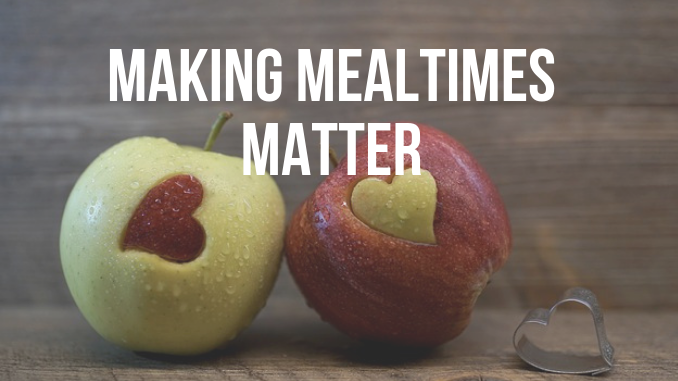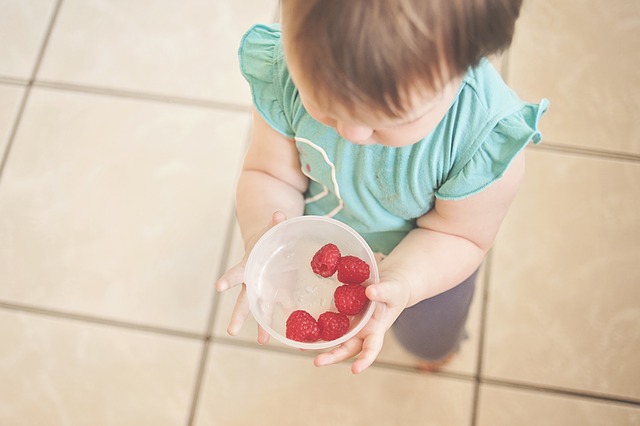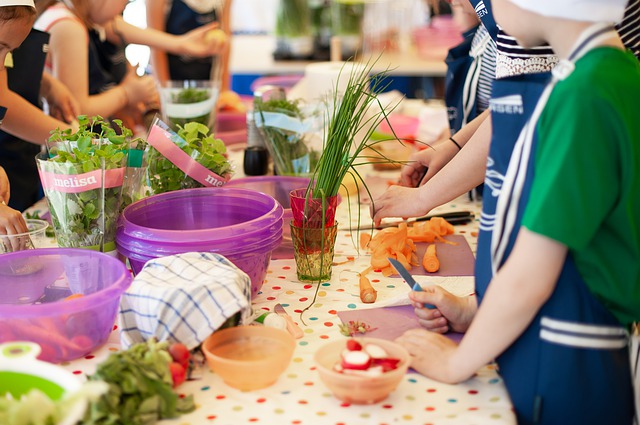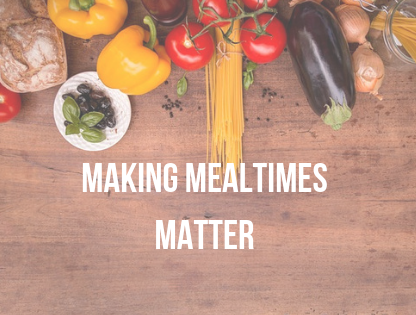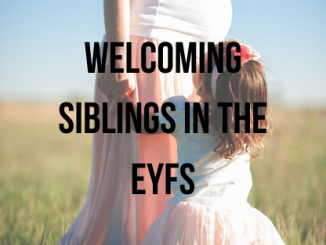Mealtimes can be a difficult element of an Early Years Setting’s day. There’s a lot for practitioners to get done, it’s a transition time which can often be difficult for young children to manage and in many settings, mealtimes also signal the arrival and departure of both children and staff. It’s easy to see how mealtimes can become a real trouble zone.
However, mealtimes are a rich opportunity for all sorts of learning; Sweden recognises this with the concept of the ‘pedagogic meal’ where practitioners act as role models for the concept of healthy eating (Sepp et al 2006)
Healthy eating
Mealtimes represent an opportunity to provide nutritious food and promote healthy eating.
In terms of the food provided, we need to ensure that portion sizes are within recommendations, as some recent studies have found that almost half of meals served to young children are too big or too small (ITF via Russell 2019) In addition to this we should be aware of the salt and sugar content of foods and the overall nutritional balance of the meals offered.
Healthy eating can be encouraged through discussions about how the body uses food, for example, “we need to eat lunch so that we have plenty of energy to play this afternoon” “carrots have lots of vitamins that keep our eyes healthy” and “fish has oil that helps our brains to work well”
Too often we have been victims to a very simplistic, black-and-white, healthy/unhealthy understanding of food which serves a limited purpose. To set children up for making healthy choices on a long-term basis it is important that they understand what it is that makes food healthy. Research has shown that Early Years settings have a key role to play in the promotion of healthy eating (Mooney et al. 2008)
Healthy relationships with food
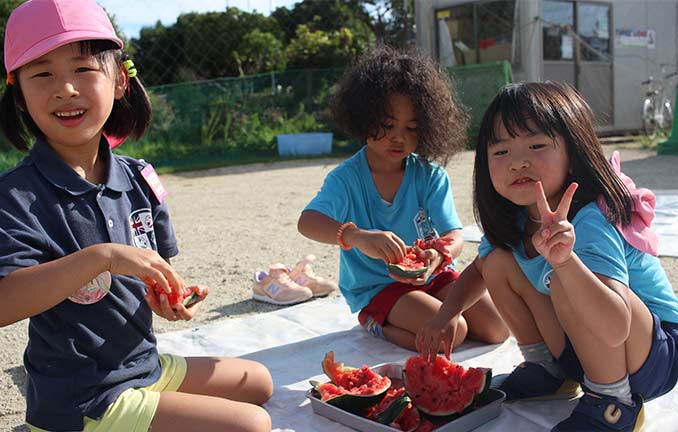
What children eat is important, but so is how they eat it (Cormack, 2017) Having a healthy relationship with food is about so much more than eating well-balanced meals. How children feel at mealtimes is important, they should be able to listen to their bodies’ signals that they are hungry and full, and eat according to this. Children should be happy and relaxed and enjoy mealtimes, including the social aspect of eating together.
Many children experience anxiety around food due to dislike of certain tastes and textures (It is thought that this is an evolutionary safety measure) and their experiences of pressure around eating. Many children experience pressurised eating at home when they are forced to finish their plate, or “have two more bites” and are often bribed to eat “if you finish this dinner you can have some cake”
Ellyn Satter (1983) developed an approach called the ‘Division of Responsibility’ model which aims to remove pressure from eating and promote a healthy relationship with food.
Satter suggested that parents are responsible for the what, when and where of feeding whilst children are responsible for the how much and whether of eating. In an Early Years setting this can be applied as practitioners providing a healthy, balanced meal or snack at a set time, in a clean, relaxed environment.
Community cohesion
Mealtimes are an important part of almost every culture; the act of eating together is considered important and these shared mealtimes lead to a feeling of togetherness in the group (Os & Eide, 2013) As Early Years practitioners we can apply this to our settings and make eating together at mealtimes an important part of our setting’s culture.
According to Corsaro and Johannesen (2007), peer cultures are created, shared and developed through everyday activities where children and caretakers take part, mealtimes are an ideal opportunity for this.
Personal, Social and Emotional Development
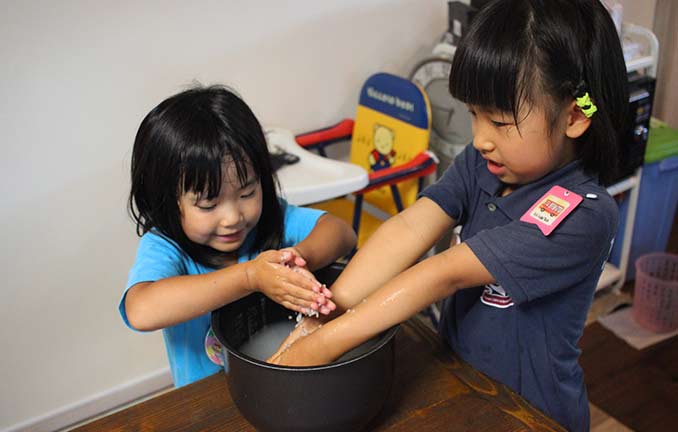
Mealtimes can also allow children to develop their independence, and interdependence; using their emerging skills to participate in the occasion.
Children can and should be invited to share in preparing for the mealtime as much as possible: for example, children may help to prepare a snack, set the table, and wash the dishes afterwards.
Mealtimes provide an opportunity for children to develop their self-care skills, washing their hands, rolling up their sleeves, serving themselves food, using a knife and fork, pouring a drink, using a cup and washing their faces afterwards. These real-life applications provide value to children’s emergent learning.
Table talk
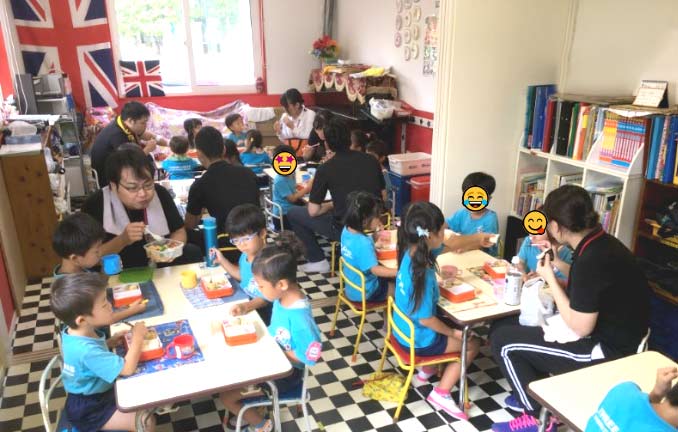
Mealtimes represent a significant language learning opportunity too. There is lots of vocabulary related to the preparation of food (boiled, mashed, baked, shredded) food itself (butternut squash, pumpkin, beef mince) and adjectives describing the foods tastes and textures (spicy, sour, crumbly, chewy) that can be taught during meal times.
Furthermore, as Aukrust and Snow (1998) emphasise, meals create culturally specific ways of talking that constitute opportunity for the socialisation of children. For example, in the UK we use the phrase “Please could you pass me the…” often around the table, much more so than in everyday life.
Cote (2001) also notes that mealtimes represent a point in the day that teachers are not engaged in working with overt educational goals and thereby allows the opportunity for conversations with children.
Improving mealtimes
In light of these learning opportunities, many settings may wish to focus in on improving mealtimes. This is not always straight forward in light of staffing requirements; in many setting a different group of staff may manage mealtimes to the regular practitioners so staff training will need to form some of the focus on mealtimes. When staff understand not only what is expected of them, but also why they are more likely to carry out their tasks diligently.
Beyond this, ensuring that clear, consistent routines for hand washing, setting and clearing the table are in place is the first port of call. When the routine is clear, consistent and taking place no matter who is in the room, children are less likely to struggle with the transitions that take place during mealtimes.
References:
Aukrust, V. G., & Snow, C. E. (1998). Narratives and explanations during mealtime conversations in Norway and the U.S. Language in Society, 27 (2), 221–246.
Cormack, J. (2017) Helping Children Develop a Positive Relationship with Food: A Practical Guide for Early Years Professionals, Jessica Kingsley Publishers
Corsaro, W. A., & Johannesen, B. O. (2007). The creation of new cultures in peer interaction. In J. Valsiner & A. Rosa (Eds.), The Cambridge handbook of sociocultural psychology. Cambridge: Cambridge University Press
Cote, L. R. (2001). Language opportunities during mealtimes in preschool classrooms. In D. K. Dickinson & P. O. Tabors (Eds.), Beginning literacy with language. Baltimore: P.H. Brookes Pub. Co.
Mooney,A., Boddy, J., Stratham, J.& Warwick, I. (2008) Approaches to developing health in early years settings in Health Education 108(2):163-177 ·
Os, E., & Eide, B. (2013). Småbarn og fellesskap i samlingsstunder og under måltider. In A. Greve, S. Mørreaunet & N. Winger (Eds.), Ytringer om likeverd, demokrati og relasjonsbygging i barnehagen. Bergen: Fagbokforlaget
Satter, E. (1983) Child of Mine: Feeding with love and good sense, Bull pub co.
Sepp, H., Abrahamsson, L. & Fjellstrom, C. (2006) Preschool staff’s attitudes towards foods in relation to the pedagogic meal International Journal of Consumer Studies 30 (2) 224-232

